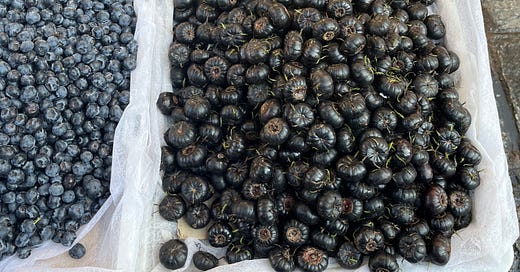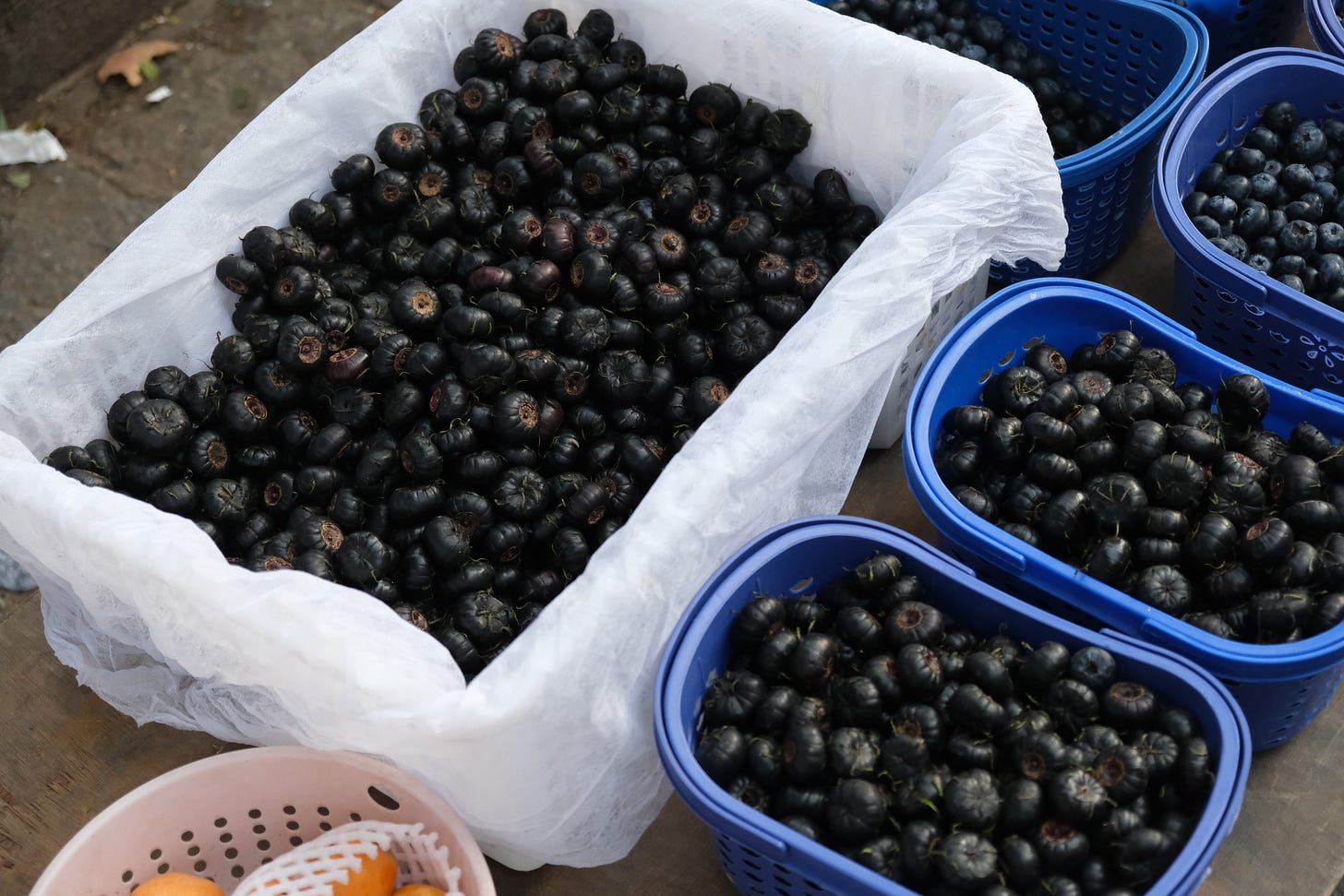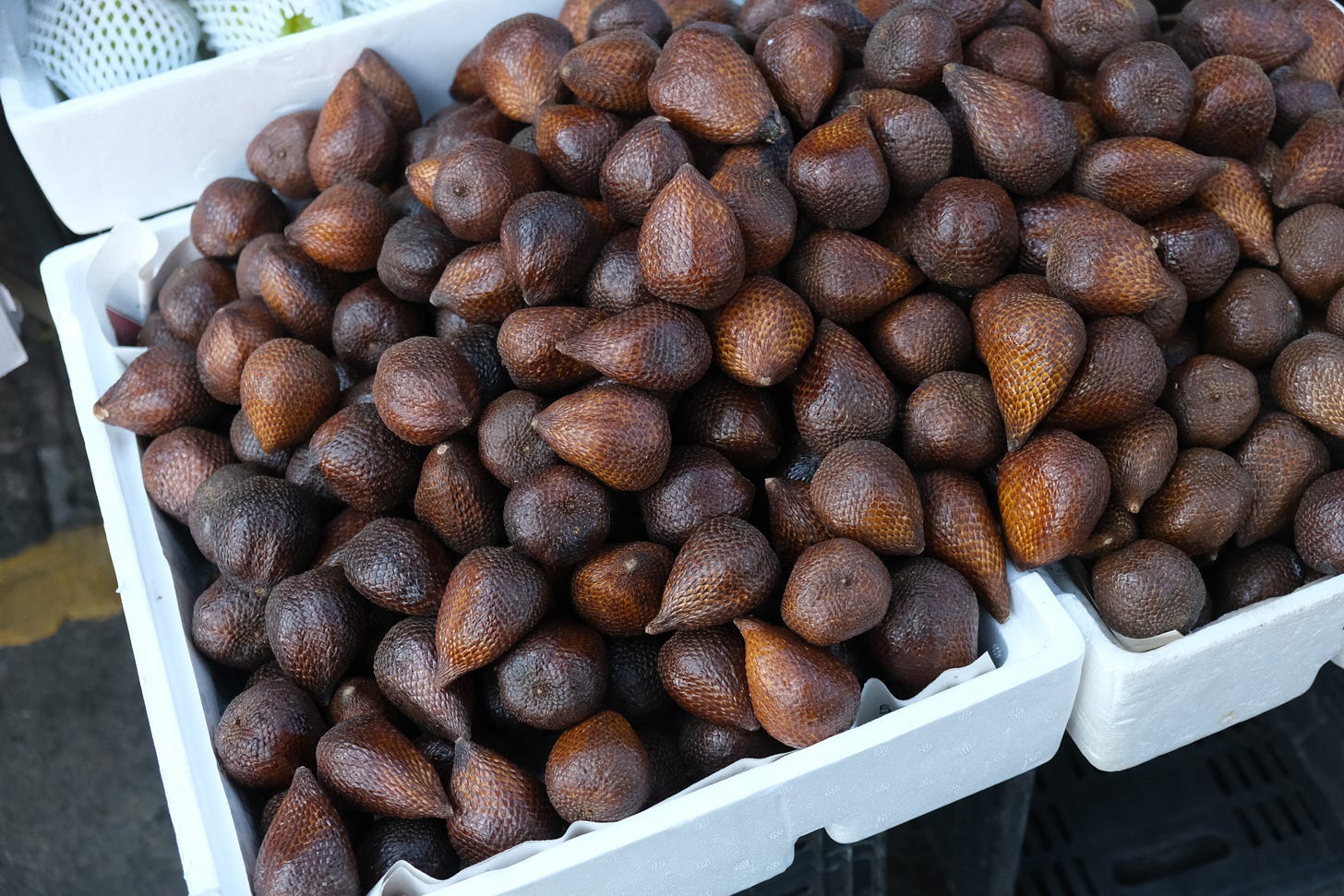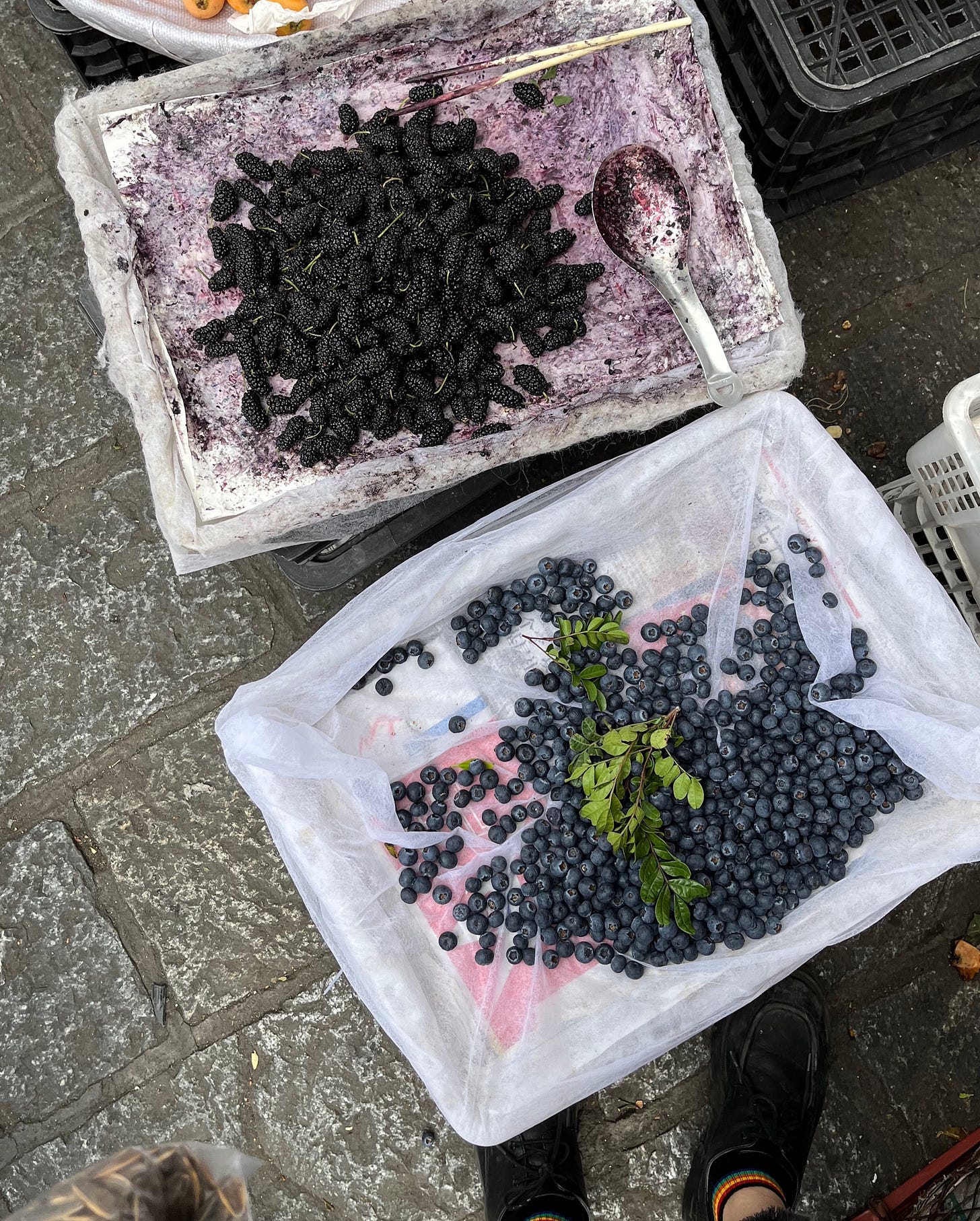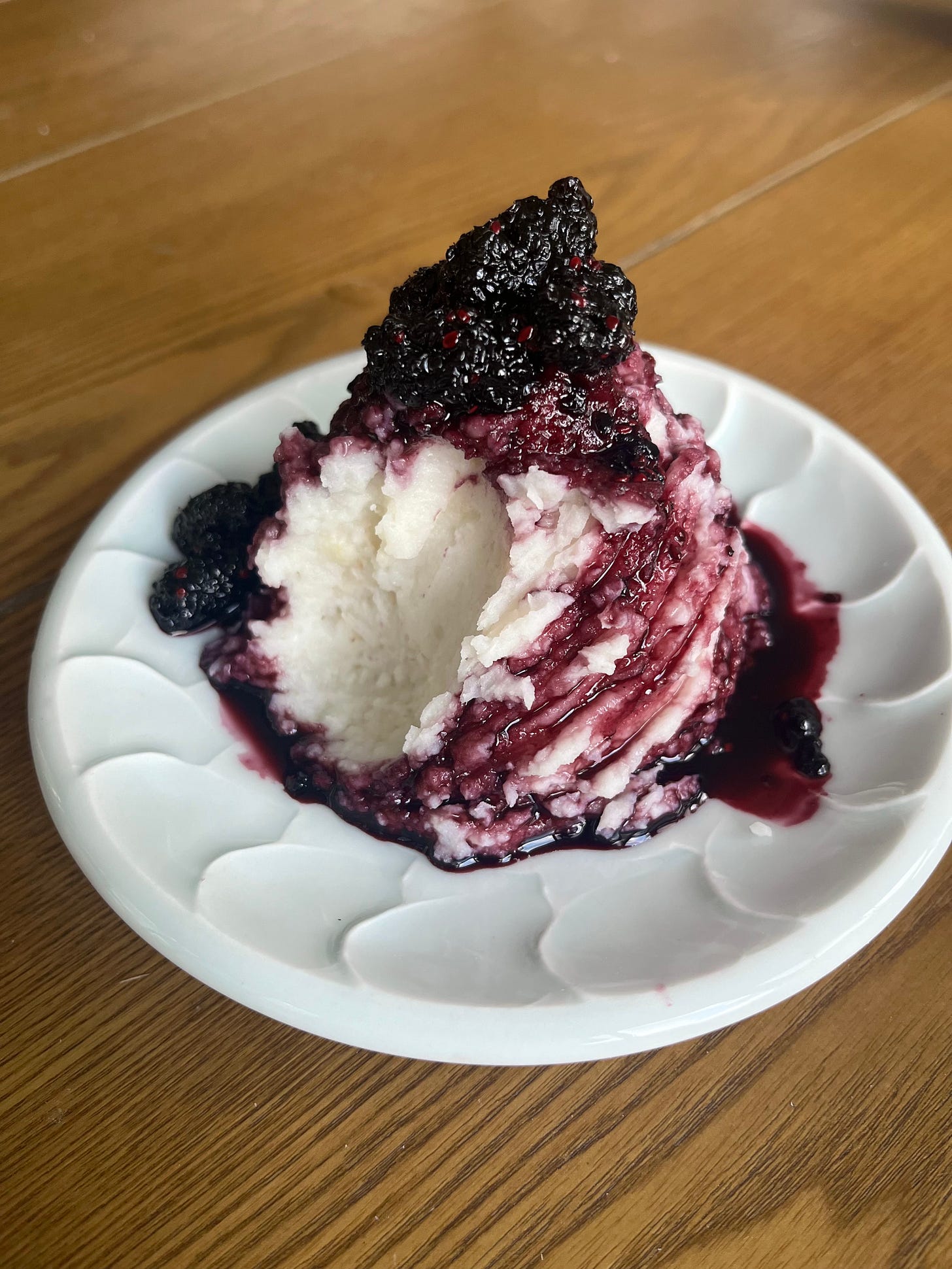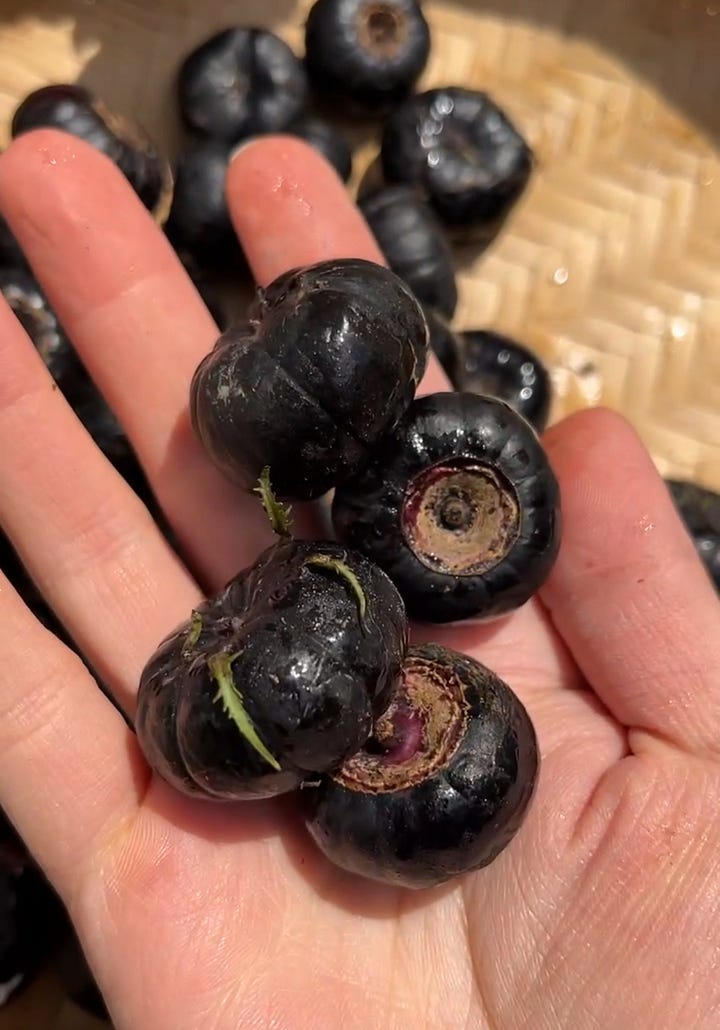
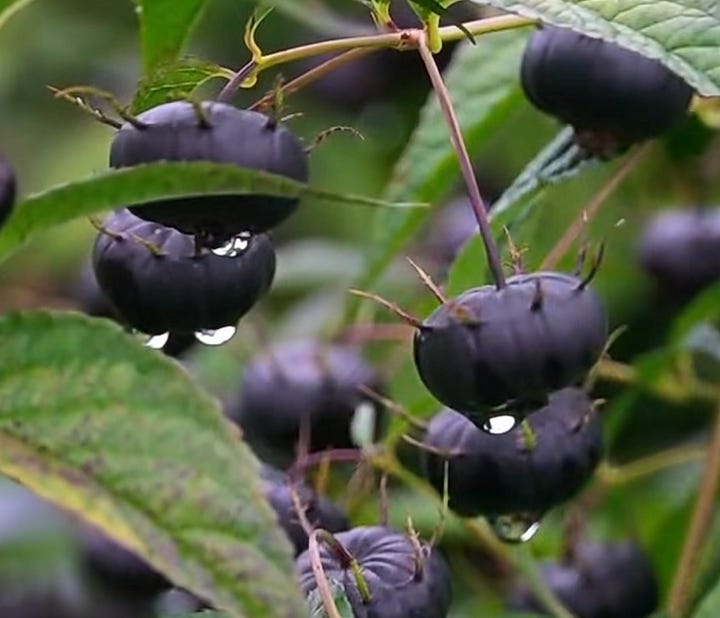
These little suckers have taken the Chinese fruit market by storm this year, grown in Yunnan’s windy groves and shipped via kuaidi to online supermarkets and doorsteps across the country. They look like blueberries but crunch like a pear, with dark delicate skin and a blossom end growing a crown of leggy sepals, like a spider or some UFO touching down on earth. The firm flesh inside is Barbie-pink, hiding tiny specks of seeds in clusters. I predict just a few years before these start appearing overseas and on fine-dining menus.
The flavor is mesmerizing: tartly sweet like a berry, floral like a pear, with the clean juicy snap of a water chestnut and a rose aftertaste. The seeds remind me of a strawberry’s. You can eat so many of these without getting bored.
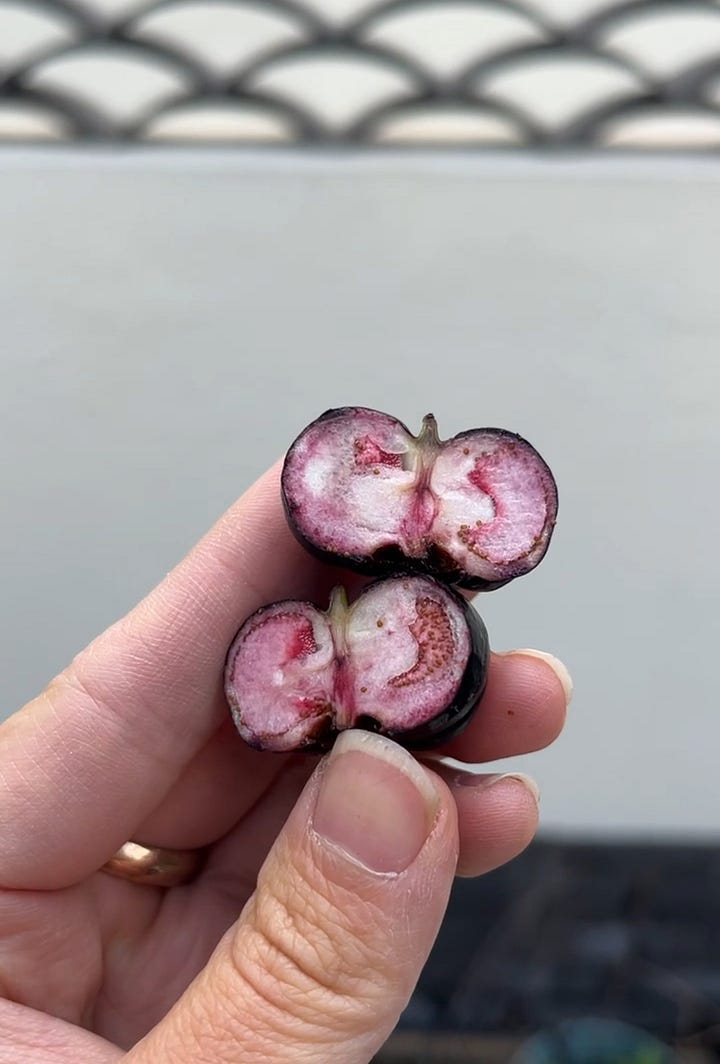
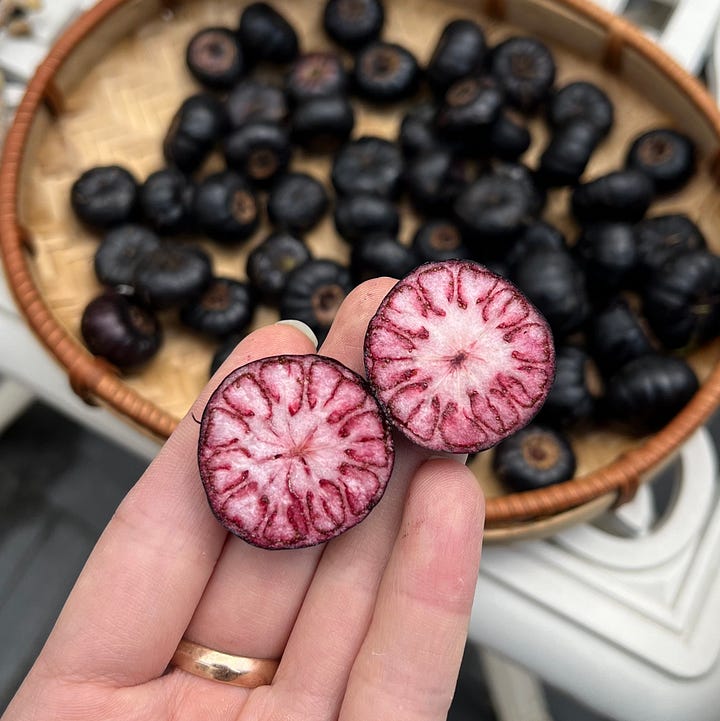
In both flavor and texture I find them superior to blueberries. They’re crunchy and complex; as I chew my brain can’t quite categorize the flavor, leaping from pear to berry to grape to mangosteen to fig, flashing with associations but unable to nail it down.
Barely any English search results exist on Google, except for this study profiling their impressive anthocyanin count (eight times more antioxidants than blueberries!). They first appeared among the Hmong minority in western Hunan and are now cultivated in China’s southwest, mostly in Yunnan’s high-altitude groves 1.2 to 2 kilometers above sea-level.
Someone needs to come up with an English name catchier than Campanumoea lancifolia. The Chinese names are red ginseng berry (红果参 hong guo shen) due to its medicinal properties, spider berry (蜘蛛果 zhi zhu guo), or abacus berry (算盘果 suan pan guo). I like the latter.
Yang mei (杨梅), also called bayberries/waxberries/ yumberries, taste as sour as they look. Perfectly round and textured with no trace of a stem, they’re like something dreamed up by a kid or a Haribo executive. The pit is the size of a cherry pit and the drupelet “stalks” are firm and crunchy, attached to a single fuzzy seed and packed as densely as floor carpet. (Insects love hiding between the stalks; best to soak the berries first in salted water.)
The darker the color, the sweeter the fruit. Sometimes they’re candied, steeped as tea, or infused into baijiu for a fruit-flavored alcohol.
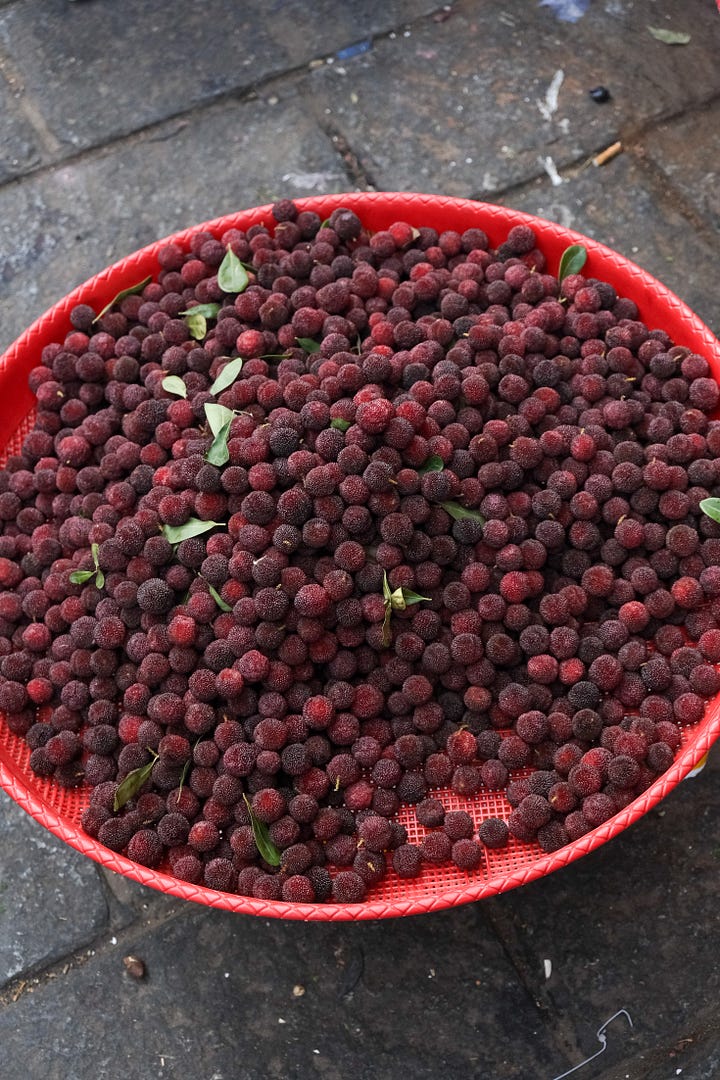
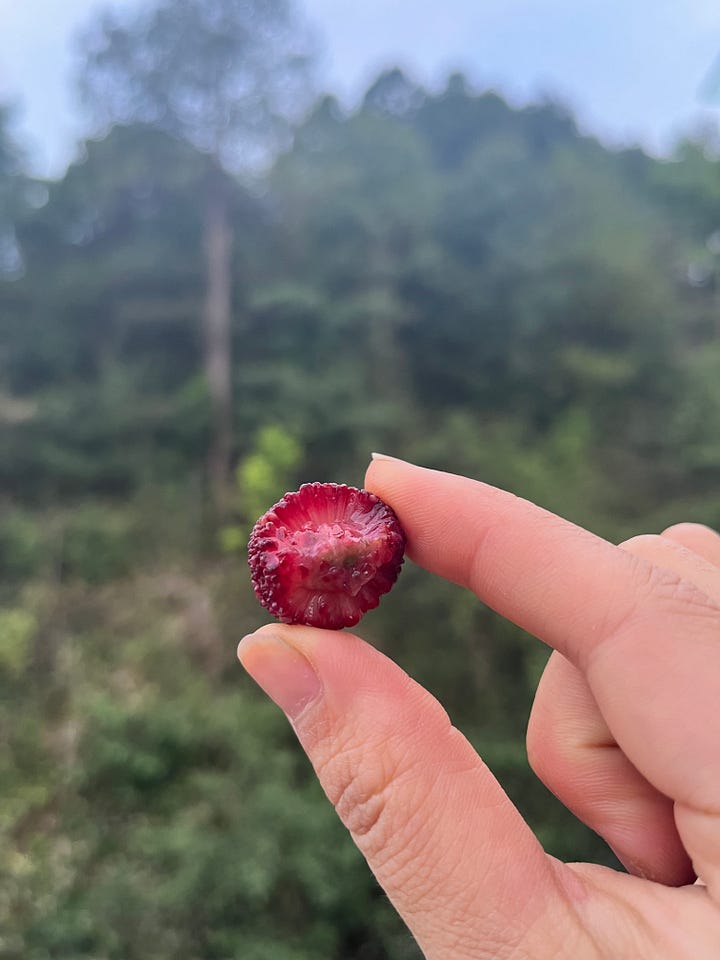
The shepi guo (蛇皮果, salacca zalacca) looks like an avocado that woke up one day with snakeskin. Peel off the thin reddish-brown scales and you’ll find a sweet aromatic fruit resembling large peeled garlic cloves, with the floral musk of ripe jackfruit. The crunchy white flesh hugging the smooth dark seed tastes like a cross between an apple and strawberry, with a pineapple tang.
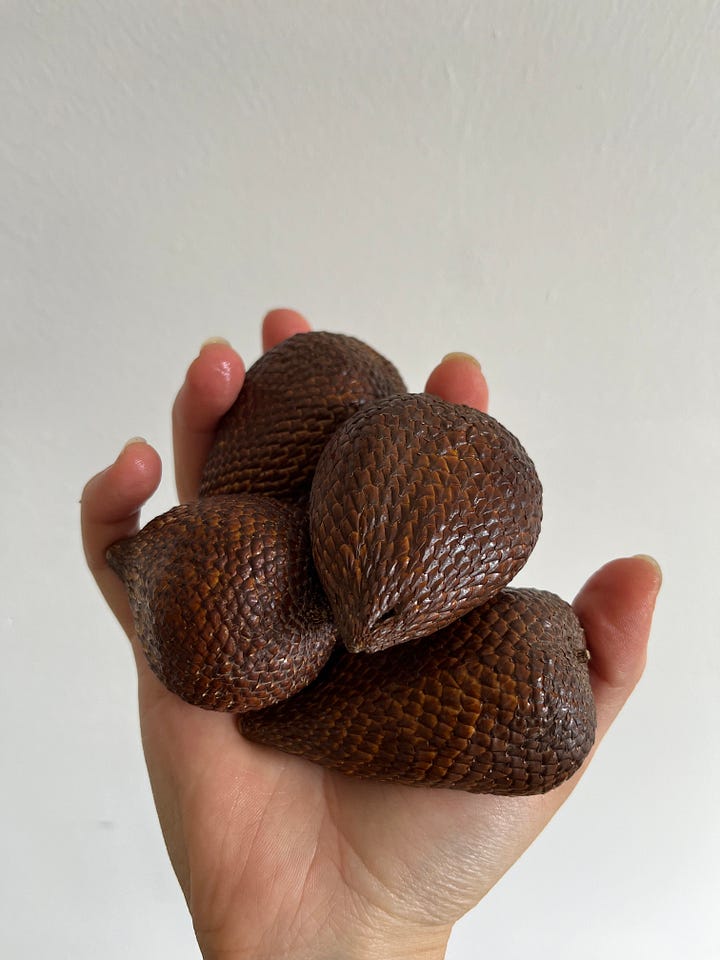
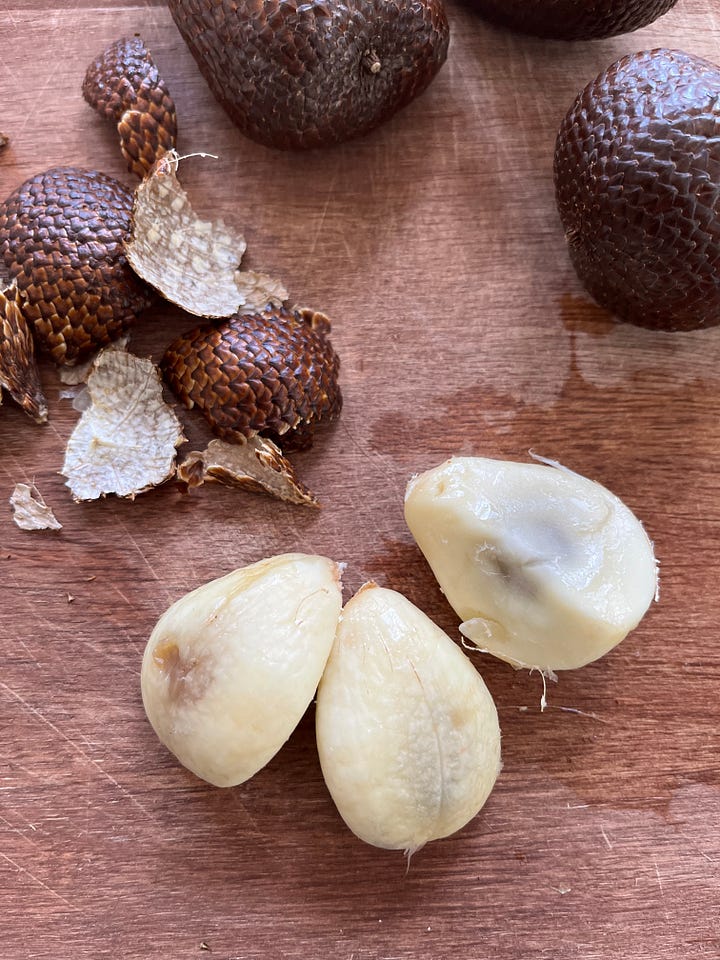
Yunnan cherry (云南樱桃) trees line the neighborhoods hanging heavy with fruit, but vendors sell the crimson fruits at the market if you’re too short to forage. The cherries are glossy and soft with large seeds. Sucking the tart fruit and spitting out the pits is time-consuming and engrossing, like cracking sunflower seeds.
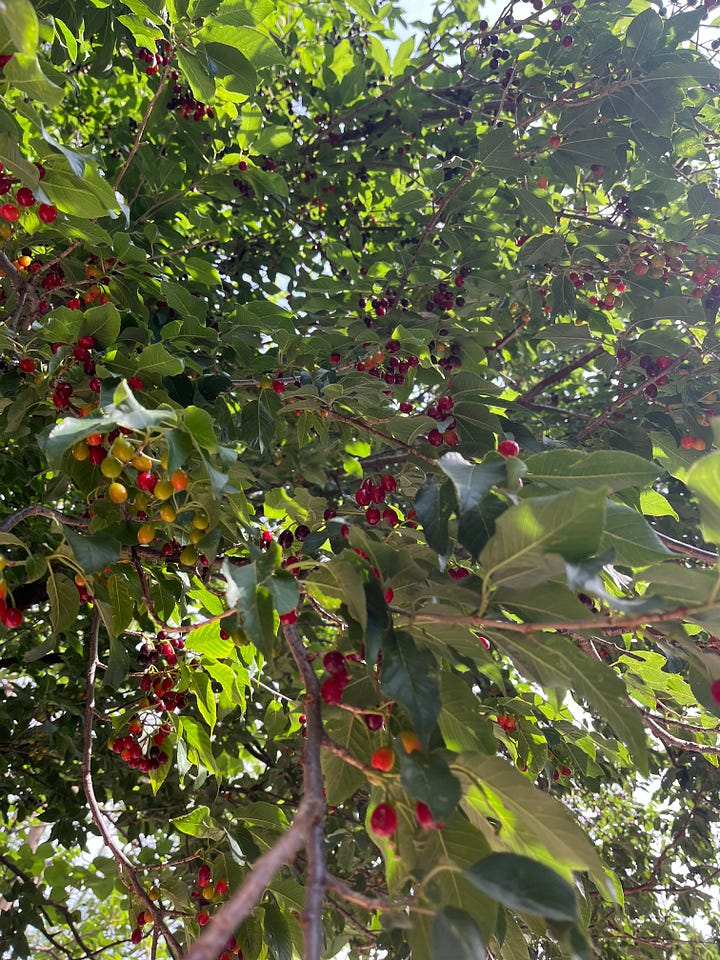
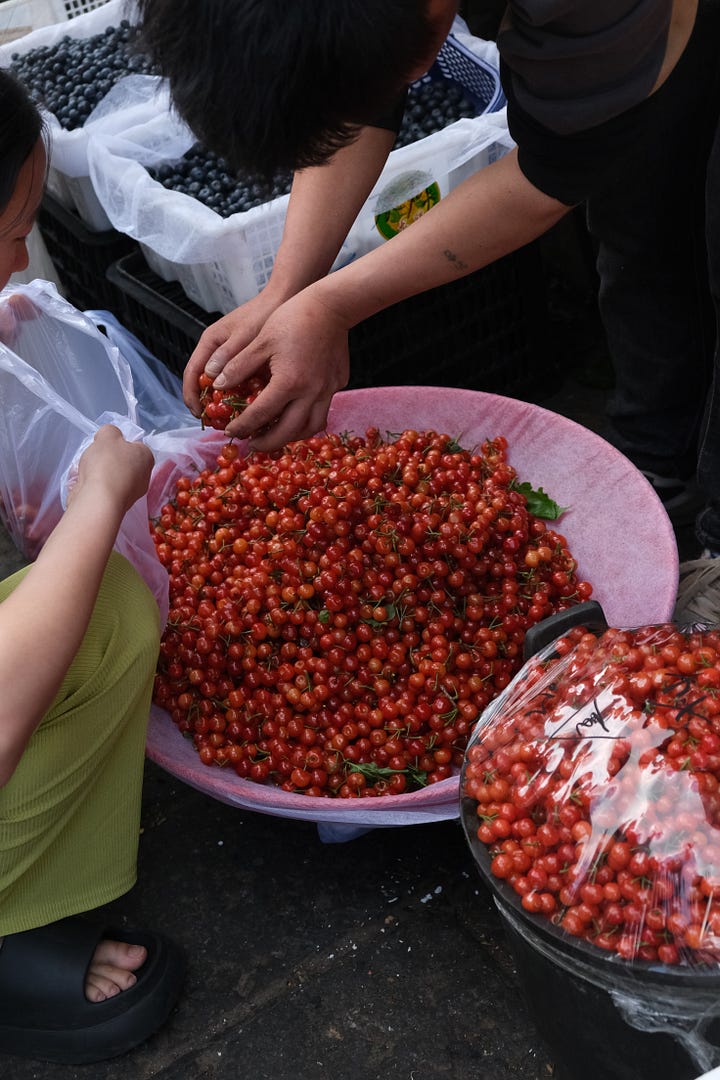
In April the sidewalks are inky with wine-colored stains from fallen mulberries. Growing up, my only exposure to mulberries (sang shen 桑葚) was the nursery rhyme, “here we go round the mulberry bush, the mulberry bush, the mulberry bush…”
The song lied: mulberries grow on trees, not bushes. They’re deciduous, pest-resistant, drought-tolerant and easygoing, happy to grow anywhere and produce an abundance of fruit. The first mulberry trees were white mulberry, cultivated in China for silk production—mulberry leaves are the only thing that silkworms will eat.
Because they’re so delicate, you can’t transport mulberries long distances or keep them longer than a few days; they’ll turn into a fermented mash. The berries don’t ripen at the same time, so the best way to harvest them is to lay a tarp under the tree and give the branches a good shake. The dark swollen berries are sweet as honey, the rest will pucker your mouth.
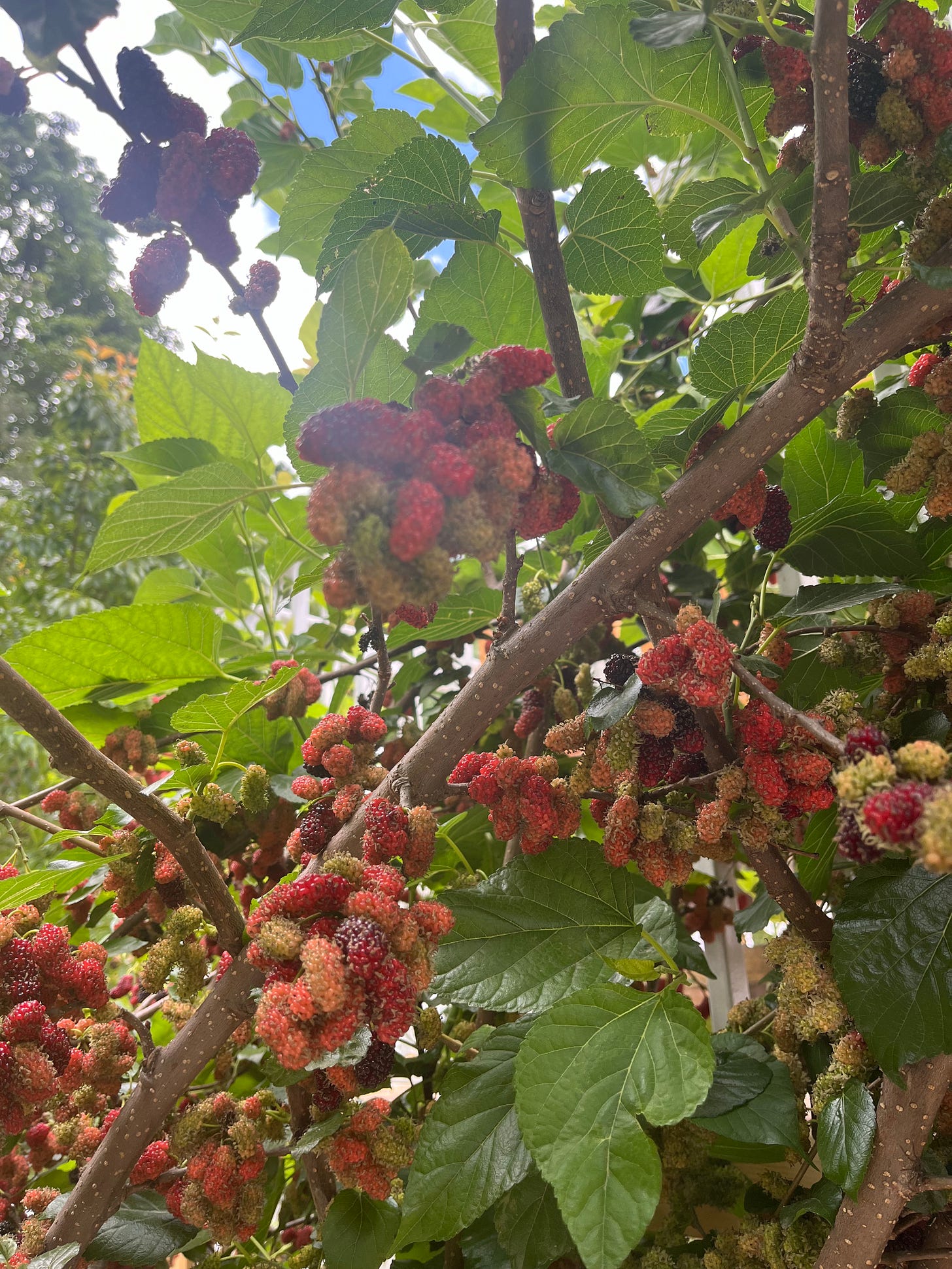
I got lucky one day and found an auntie selling finger-length mulberries (长桑果), a sweeter and more intensely flavored variety, with more potent medicinal powers. In traditional Chinese medicine the mulberry tonifies the yin and blood, replenishes fluids and moistens the intestines. The fruit is sold dried and commonly prescribed to treat headaches and constipation. You can also dry the leaves and steep them in tea.
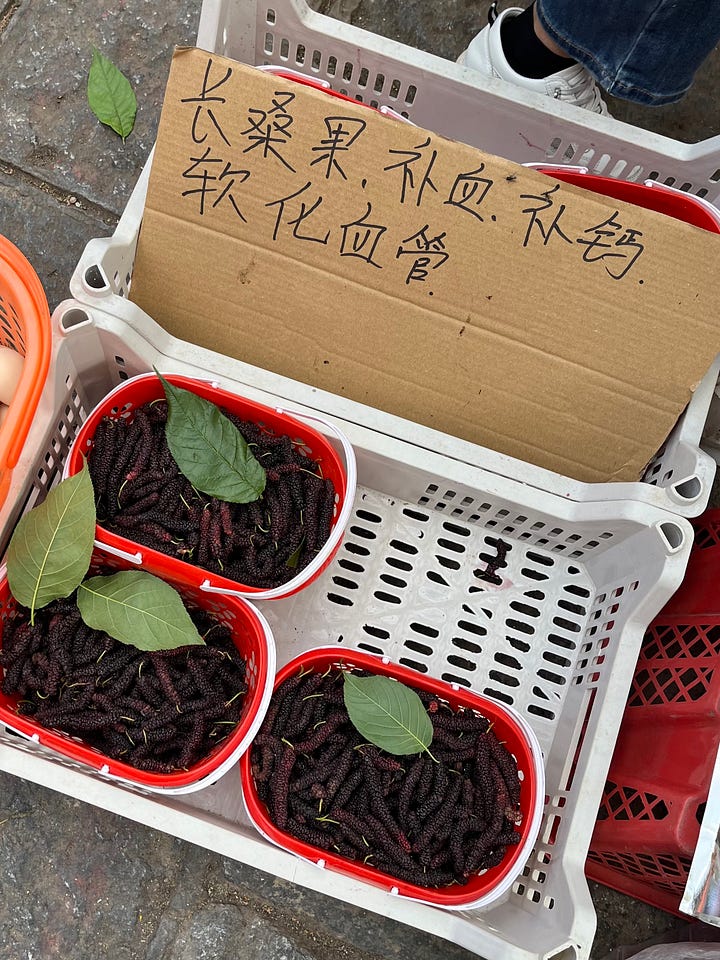
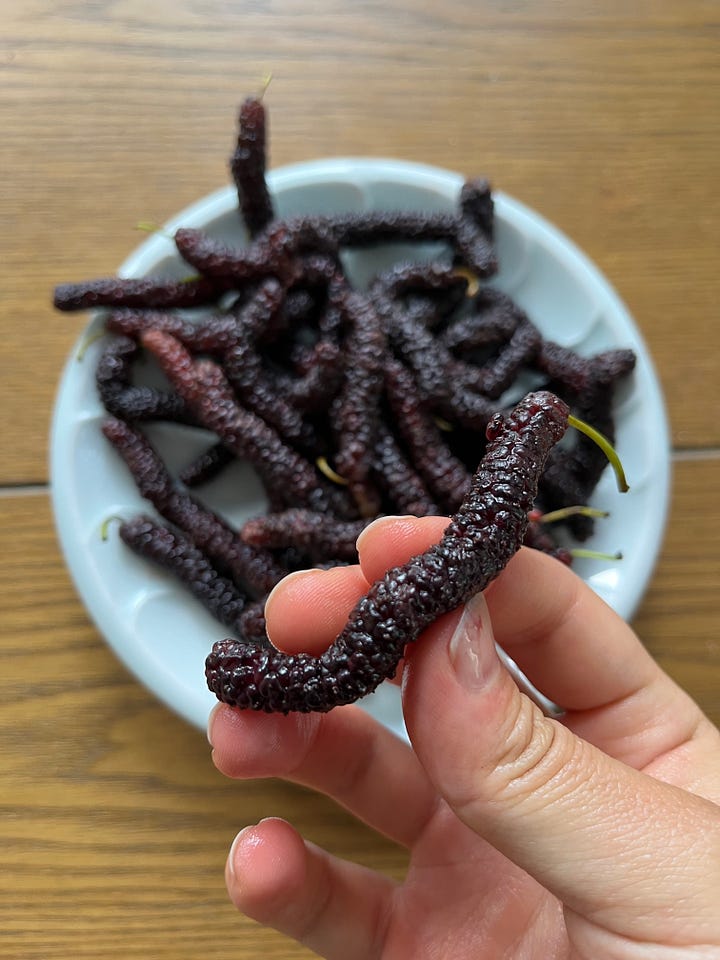
Mulberries taste tart and sweet, like raisins or grapes, with a faint cucumber aroma. The grape flavor intensifies when you cook the berries down into a compote or jam. Citrus provides the necessary balance.
Chinese yam with mulberry (or blueberry) compote 桑葚山药泥
Serves 4
I ate this simple dessert of mashed shanyao at a temple restaurant a few years ago, laden with syrupy blueberries. Chinese yam has a mild flavor that reminds me of mashed taro, with the refreshing slipperiness of ice cream. It’s like taro or ube in desserts— the flavor swings both savory and sweet.
Chinese yams are called “mountain medicine” (山药 shanyao)— in TCM they’re sweet and neutral, strengthening the spleen and stomach. The combination of mulberries and Chinese yam has a fantastic tonifying effect for this time of year.
Substitutions: Feel free to use blackberries or blueberries in place of the mulberries, or frozen blueberries (300g, about 2 cups).


